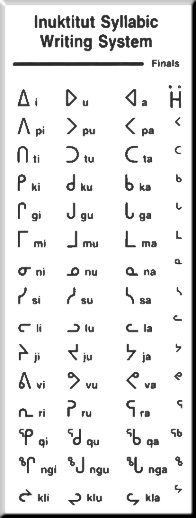
WHERE WILL YOU WANDER TODAY?
ART | COINS | STAMPS

ABOUT US
As a husband and wife team, we're always on the lookout for fresh, interesting, and unique finds!
We are located in Winnipeg, Manitoba, and run a private, appointment-only gallery specializing in Certified Inuit Art. We also offer select Canadian Stamps, Canadian Non-Circulated Coinage, and other associated works of art.
Why Inuit Art? Our love for Certified Canadian Inuit Art is based on three unique attributes:
Each individual piece of Inuit Art is a one-of-a-kind, unique work of art... no two pieces are alike.
Every work of Inuit Art is individually hand-crafted for our enjoyment.
All works of Inuit Art are done using hands-on skills passed from generation-to-generation.
As this is only one of our "several" interests and hobbies, we never seem to have enough to post every offering online! To make things easy for our online customers, we list our offerings exclusively on the E-bay Canada Marketplace. Browse our art offerings below.
Thanks for visiting, and regardless of where you wander today, make it a fantastic day!
 |  |  |
|---|
INUIT ART | MAKING A GOOD INVESTMENT
An Inuit art sculpture is a unique, original, one of a kind work of art. Each sculpture is hand carved by an Inuit artist, making it a special one-of-a-king gift for that someone special.
If you're new to Inuit art, you're probably asking, "How do I know if a particular piece is authentic Inuit Art?" The best answer: Look for the "Igloo Tag".
A bit of history...
As the Inuit settled in permanent communities throughout the mid 1900s, they partially abandoned their traditional nomadic way-of-life, which centered heavily on hunting and fishing. As a result, Inuit communities found a new dependence on "purchasing" goods, and the Canadian government began exploring new sources of income that they felt were suitable in improving the livelihood of Canada's Inuit.
Given the traditions of carving and creating artistic items in Northern Canada, handicrafts seemed to be a formidable source of possible income. Canadian authorities encouraged the Inuit to hone their skills, producing artwork and sculptures to sell to the country's non-Inuit residents and visitors, fueling a boom in the production of Inuit art.
Originally, the Canadian government issued "Disc Numbers" to the Inuit. From the 1940's to the 1970's, numbers were imprinted on fibre discs, designed to be worn around the neck to identify Inuit persons. The numbers on each disc were preceded by an "E" or a "W", indicating that the wearer resided in the "E"astern or "W"estern Arctic. Following the "E" or "W" prefix, the next single or double digit stood for the community of residence that the bearer lived in, while the last one-to-four numbers were particular to the individual. It is these Disc Numbers that Inuit artists from that time period used to inscribe on the bottoms of their sculptures.
As you can imagine, this system of identification was perceived to be somewhat controversial as our societies evolved. In the early 70's the Disc Number system was replaced with the artist's "actual name", and the more refined and respectful "Igloo Tag" system of art identification was introduced.
The "Igloo Tag" is attached to every authentic / legitimate work of Inuit Art produced in Canada. It is a certificate proving the authenticity of each piece. On each tag, the name of the artist, the community of residence, the item number of the piece, and a brief description of the work are recorded.
Today, each carving that is brought into the local art co-op by an artist is assigned a unique art tracking number which is written on the card, and then registered with the Inuit Art Foundation of Canada. This is your GUARANTEE of authenticity... the "Igloo Tag" certifies that the artwork has been made by Canadian Aboriginal Artists, as the tag may only be attached to original sculptures and art from Northern Canada.
It’s sometimes confusing -particularly for new collectors - to determine what is "genuine" Inuit art and what is not. Some stores and gift shops sell souvenir “carvings” made of plastic, ceramic or stone, that have been mass-produced. These are not authentic Inuit art pieces from Canada's Arctic.
How can you differentiate between "genuine" Inuit Art and mass-produced souvenirs? Here are a few quick and easy tips:
If...
There are several pieces that look EXACTLY alike...
A piece has a cute, conventional look similar to a ceramic figurine...
A piece has marks made by a molding process...
A piece is priced below $50...
An "Igloo Tag" of authenticity is not present...
the piece in question is not likely to be an original work of Inuit art.
As an added layer of assurance, check the base of the sculpture for a signature. Most carvers sign and date their work, either in Inuktitut syllabics or Roman orthography. Instead of a signature, older sculptures may have a number preceded by an ‘E’ or a ‘W’, as mentioned above.
Each and every item offered by "The Wandering Eskimo" is GUARANTEED to be 100% authentic, and will be shipped complete with your certified "Igloo Tag" of authenticity!
For more information on recent developments with the "Igloo Tag", click here to read an article by Sara Frizzell of the Canadian Broadcasting Corporation (CBC).
CARING FOR YOUR PURCHASE
Congratulations! Now that you have selected your work of art, there are a few things that you can do to ensure that your purchase will maintain its beauty for generations to come!
Click the arrows below to navigate information on proper care and display procedures by item type and medium.

VIDEOS: LEARN MORE ABOUT INUIT ART

The Living Stone

Cape Dorset printmaker Pitseolak Niviaqsi at work

Heritage Minutes: Kenojuak Ashevak


